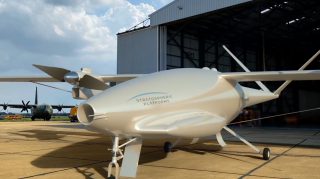

EE will be able to extend 4G connectivity to the remotest area over a satellite link
Boffins at BT Group and satellite internet services provider OneWeb have developed a way to connect 4G data over a low Earth orbit (LEO) satellite (above) down to an EE mast and to the mobile core network instead of by a traditional line of sight microwave or fibre connection.
This paves the way for connecting remote communities, emergency responders, disaster recovery units and deployments like festivals, events or construction sites.
OneWeb is a global communications network powered by a constellation of 648 LEO satellites. Based in London, OneWeb says its technology enables high-speed, low-latency connectivity for governments, businesses, and communities anywhere on Earth
The satellites are in 18 synchronised polar orbits 1,200km high. Each satellite connects to the antennas and ground networks, transmitting data in real time and at high speed. LEO antennas can view multiple satellites and connect in places that are hardest to reach.
BT Group is also running a trial with Stratospheric Platforms, a company pioneering communication links using high-altitude drones to deliver mobile coverage to remote areas. Stratospheric Platforms was founded in 2014. Deutsche Telekom became a major investor in 2016. The project is to establish communication links via the stratosphere, complementing and extending existing mobile and fixed terrestrial networks through “masts in the sky”. The trials are being carried out at BT’s Global innovation centre in Adastral Park











